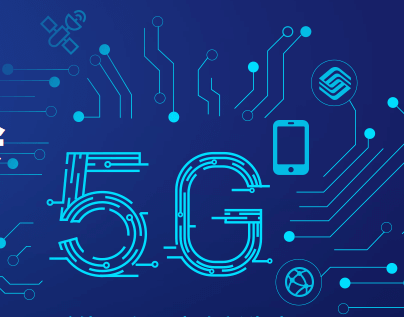According to the 3GPP 38.101 agreement, 5G NR mainly uses two frequency segments: FR1 band and FR2 band. The frequency range of the FR1 band is 450MHz - 6GHz, also known as the sub 6GHz band; the frequency range of the FR2 band is 24.25GHz - 52.6GHz, which is usually called millimeter wave (mmWave)
In a long period of history, the millimeter band is a wild land. why? The reason is simple because there are few electronic components or devices capable of transmitting or receiving millimeter waves. Why are there no electronic devices that send or receive millimeter waves? There are two reasons.
The first reason is that although millimeter waves can provide more bandwidth and higher data rates, previous mobile applications did not require such a large bandwidth and such high data rates, and millimeter waves have no market demand. And millimeter waves have some obvious limitations, such as too much transmission loss, too small coverage, and so on.
The second reason is that millimeter waves are too expensive. Producing sub-micron-sized integrated circuit components that can operate in the millimeter-wave band has been a challenge. Overcoming the loss of transmission and increasing coverage also means a lot of money. However, everything has changed in the past decade.

With the rapid development of mobile communications, frequency resources within 30 GHz are almost occupied. Governments and the International Organization for Standardization have allocated all “good” frequencies, but there are still frequency shortages and frequency conflicts. The development of 4G cellular systems and the upcoming 5G are all dependent on proper frequency allocation. The problem is that there is almost no frequency left.
Millimeter waves, like the New World of the Americas, provide mobile users and mobile operators with "infinite" frequency resources.
Millimeter waves bring large bandwidth and high speed. The maximum bandwidth that can be used in a 4G LTE cellular system based on the sub6GHz band is 100 MHz, and the maximum data rate is 1Gbps. In the millimeter wave band, the maximum bandwidth that mobile applications can use is 400MHz, and the data rate is up to 10Gbps or more.
Market demand is always the biggest driving force for innovation. The technical challenge of producing a cost-effective millimeter-wave-band integrated circuit component is quickly overcome. By using new materials such as SiGe, GaAs, InP, GaN, and new production processes, transistors operating on the millimeter-wavelength band have been integrated into transistors as small as tens or even a few nanometers, which greatly reduces the cost.
Are we now free to use any millimeter wave between 20GHz and 300GHz? Not yet. Why? When radio waves are propagating, the atmosphere selectively absorbs electromagnetic waves of certain frequencies(wavelengths), causing the propagation loss of these electromagnetic waves to be particularly severe. The main absorption components of the electromagnetic waves are oxygen and water vapor. The resonance caused by water vapor absorbs electromagnetic waves near 22 GHz and 183 GHz, while the resonance absorption of oxygen affects electromagnetic waves around 60 GHz and 120 GHz. So we can see that no matter which organization allocates millimeter wave resources, it will avoid the frequency bands near these four frequencies.
One of the most critical limitations is the millimeter wave propagation distance. The laws of physics tell us that with the same transmit power, the shorter the wavelength, the shorter the propagation distance. In many scenarios, this limitation causes the millimeter wave to travel no more than 10 meters. Everything has two sides. The propagation distance is too small and sometimes it becomes the advantage of the millimeter wave system. For example, it can reduce interference between millimeter wave signals. The high-gain antenna used in the millimeter-wave system also has good directivity, which further eliminates interference. Such a narrow beam antenna not only increases power but also increases coverage while enhancing security and reducing the probability of signal interception.
In addition, the "high frequency" factor will reduce the size of the antenna, which is another unexpected surprise. Assuming that the antenna size we use is fixed relative to the wireless wavelength, such as 1/2 wavelength or 1/4 wavelength, the increase in carrier frequency means that the antenna becomes smaller and smaller. For example, a 900M GSM antenna is about a few tens of centimeters in length, while a millimeter wave antenna may be only a few millimeters. That is to say, in the same space, we can plug in more and more high-band antennas. Based on this fact, we can compensate for high-frequency path loss by increasing the number of antennas without increasing the size of the antenna array. This makes it possible to use massive MIMO technology in 5G millimeter wave systems.
After overcoming these limitations, 5G systems operating in millimeter waves can provide many services that 4G cannot provide, such as HD video, virtual reality, augmented reality, wireless base station backhaul, short-range radar detection, dense urban information services, stadiums. / Concert / shopping center wireless communication services, factory automation control, telemedicine, security monitoring, intelligent transportation systems, airport security checks, etc. The development and utilization of the millimeter wave band provides a broad space and unlimited imagination for 5G applications.
Since 3GPP decided that 5G NR will continue to use OFDM technology, 5G has no disruptive technological innovation compared to 4G, and millimeter wave is almost the biggest "new idea" of 5G. The introduction of other new 5G technologies, such as massive MIMO, new numerology (subcarrier spacing, etc.), LDPC/Polar codes, etc., are closely related to millimeter waves, all in order to better extend OFDM technology to millimeter bands. In order to adapt to the large bandwidth characteristics of millimeter waves, 5G defines multiple subcarrier spacings, of which the larger subcarrier spacing (60KHz and 120KHz) is specifically designed for millimeter waves. The aforementioned massive MIMO technology is also tailored for millimeter waves. Therefore, 5G can also be referred to as "enhanced 4G extended to millimeter wave" or "enhanced LTE extended to millimeter wave".
 sales@enrichtek.com
sales@enrichtek.com +86 755 28346595
+86 755 28346595 English
English
 中文
中文 Deutsch
Deutsch بالعربي
بالعربي 日本語
日本語 Español
Español Pусский
Pусский Français
Français Italiano
Italiano 한국어
한국어 Português
Português Svenska
Svenska Suomi
Suomi Polski
Polski Hollands
Hollands





